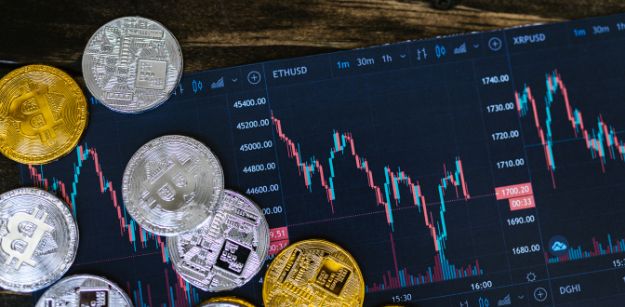Among the 5 BTC with the largest capitalization, we have 2 stablecoins — Tether ($78 billion in market value) and USD Coin ($46 billion). Promising faster transactions and lower costs, alternative ecosystems are becoming more common. But these are not all stablecoins available to investors in developed countries like the USA, Canada, the EU, and other regions. Such types of cryptocurrencies captured the hearts of millions of users registered on exchanges. Let’s find out why this happened.


Why Do Traders Have Such a Big Interest in Stablecoins?
Stablecoins are an alternative type of tokens issued to keep a stable exchange rate. As the number of altcoins increased, such payment tools were seen as a separate group. It’s not without a reason. As the name implies, the value of such coins is stable in relation to a certain asset (Euro, gold, US dollar, or other fiats). Perhaps this is one of the reasons for the popularity of stablecoins. Here is a list of the most common of them:
| Tether (USDT) | The oldest stablecoin, issued in late 2014, is associated with the Bitfinex exchange (created by Reeve Collins and Craig Sellars). It was released as a bridge between the fiat and cryptocurrency ecosystem which was a real boom in the financial sector. Now, hardly anyone doubts the prospects of such a financial tool. At the end of September 2021, Moore Cayman confirmed that Tether's assets are $69.15 billion, which is more than its liabilities ($69 billion). Important advantages of USDT are the transparency and the high speed of transactions. Tether's liquidity is backed by a combination of several fiat reserves and bills. But even so, the owners of the asset could not avoid complaints. USDT has been the subject of several controversies with investors and regulators often claiming that this stablecoin is not transparent. The owners of Tether had to defend their interests in court many times while a full audit of the funds was not carried out. |
| USD Coin (USDC) | Coinbase-created stablecoins that are fully secured, liquid (the reserve asset is mostly US dollars), and convertible on a one-to-one basis through platforms like Circle or Coinbase. It runs on the ETH. This means that wallet holders are unlikely to have problems regarded currency exchange. Simply put, USD Coin is a tokenized version of the US dollar. Due to the high liquidity, investors increasingly prefer this altcoin. All USDC reserves are held in leading US-based financial institutions — Bank of NY Mellon and BlackRock. This currency is available on Algorand, Ethereum, TRON, Stellar, Ethereum, TRON, Avalanche, Solana, and Hedera. |
| Dai (DAI) | Created and managed by the decentralized organization MakerDAO, founded by Dane Rune Christensen in 2015. This digital product has not yet become global but it’s of interest to many European investors. DAI reserve assets include not only US dollars, but also BTC. It’s based on the ETH network. Every decision and transaction regarding DAI is publicly visible. |
| Binance USD (BUSD) | This token is issued by the leading exchange — Binance, the team that ensures the free flow of money between the BTC and the traditional financial system. The BUSD allows traders to save on transaction fees and earn from the price fluctuations. This stablecoin is an officially regulated cryptocurrency that is approved by the NY State Department. The token issuer conducts a monthly BUSD inventory audit. Most reserves are insured by the FDIC and the US Treasury Department. |
| Paxos (PAX) by itBit | PAX was created by the US-based company in accordance with the banking laws of the State of NY and regulated by the Department of Financial Services. This digital asset has not yet been bought by large investors due to certain risks. |
| Gemini Dollar (GUSD) | The NY Department of Services' first regulated BTC, was issued by the Winklevoss brothers (original creators of Facebook). This altcoin will inevitably become a global financial tool for millions of users. |
Any founder of any Blockchain project can issue their own stable token (a digital dollar). But they must provide it with other collateral — dollar assets, gold, commercial paper, treasury bills, or discount notes. Stablecoins are in some way a link between the traditional banking segment and cryptocurrency ecosystem. The increase in the popularity of such tools depends on the growth of the DeFi and NFT market.
Prospects for Stablecoins in 2022
The vast majority of stablecoins’ exchange rates are based on the dollar and the ERC20 standard. However, there are also projects related to the Euro — bitEUR or xEURO. As the popularity of BTC grows, altcoins may also become more mainstream, bypassing banking barriers. Over the last year, the market has increased by over 100%, and over the last 2 years by 1700%. Now the competition is getting tougher. Such projects as USDT, USDC, and DAI cover a large share of transactions.
Noteworthy is the project founded by Facebook owners. It’s about Libra which became a global digital currency with stablecoin functions. However, until now such impulses have been effectively blocked by the governments of various countries. Most states are kept away from alternatives for traditional currencies that are completely controlled by them.
According to ICOholder which tracks cryptocurrency rates’ fluctuations, there are over 10,000 altcoins worldwide. The most popular of them is Ethereum which covers almost 19% of the market. In total, altcoins occupy almost 60% of the BTC ecosystem. Moreover, investors are most interested in stablecoins. This is because holding an asset does not involve significant risks. Furthermore, new protocols such as FEI, UST, and FRAX are associated with alternative market entry strategies.
Key Takeaway
There are several factors that give a particular cryptocurrency an advantage. In the case of Bitcoin, this means that its number in the world is limited to 21 million coins. In turn, Ethereum associates with smart contracts that Bitcoin does not ensure. But thousands of enthusiasts are unlikely to stop here. Developers and financiers are constantly trying to outperform their competitors.


No doubt, stablecoins are the future of BTC. They are usually used on exchanges (decentralized or centralized), markets, or payment gateways in order to keep relatively the same value during the exchange. Enthusiasts and beginners who do not want to lose money when volatile cryptocurrencies fluctuate prefer this particular payment tool.



